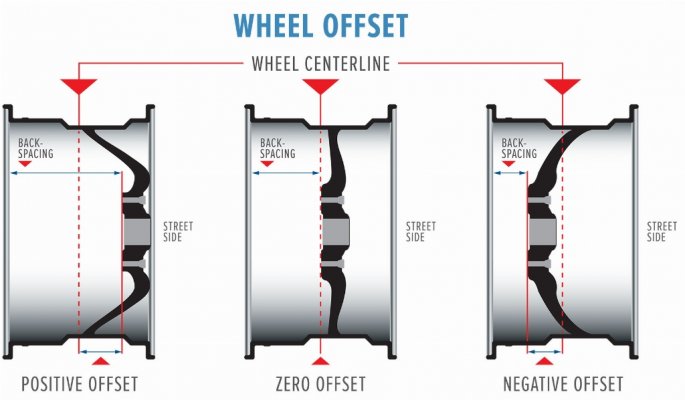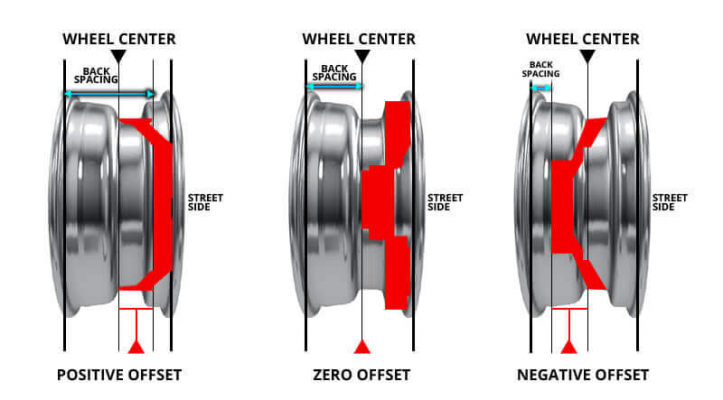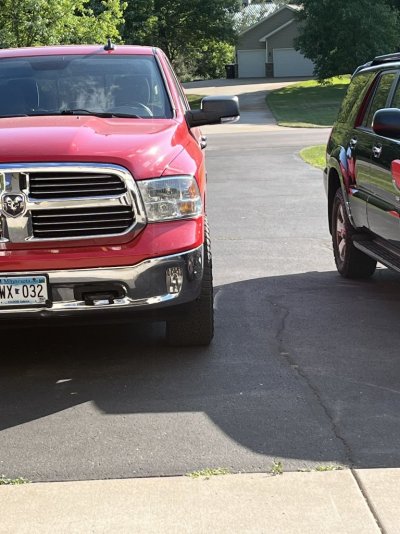So in order to have my tires go farther outside the fender I need to go higher negative?
Yes, or less positive like you first said.
To reiterate- The more positive the offset the less the wheels will stick out of the wheel wells. That said, you really do need to know what your actual current offset is in order to determine how much more they will stick out.
Explanation with pictures may help.
Wheel Offset and Backspacing Explained
Offset refers to how your car’s or truck’s wheels and tires are mounted and sit in the wheel wells.
- Zero wheel offset is when the hub mounting surface is in line with the centerline of the wheel.
- Positive wheel offset is when the hub mounting surface is in front (more toward the street side) of the centerline of the wheel. Most wheels on front-wheel drive cars and newer rear-drive vehicles have positive offset.
- Negative offset is when the hub mounting surface is behind the wheel centerline. “Deep dish” wheels are typically a negative offset.


Backspacing is the distance your wheels and tires need to accommodate both offset and wheel width. It’s especially important to factor in when the new package you want is wider than what came on your vehicle.
Getting offset and backspacing measurements right means you’ll get a wheel and tire package that offers the looks, handling and performance you’re after.
Getting them wrong can mean big problems.
Common Problems From Too Much Positive Offset
- Expensive damage from the inner edge of the wheel and tire rubbing against the bodywork or suspension
- Interference with brake parts
- Risk of tire failure
- Poor handling
- Making your car unstable
Problems From Too Much Negative Offset
- Increased steering wheel kick-back
- Additional stress on the entire suspension
- Poor handling
handling and make your car unstable.
- Zero offset wheels have the hub mounting surface even with the wheel’s centerline. That means there will be equal distance on either side.
- Negative offset wheels have a deep concave look. The hub mounting surface is towards the inside of the wheel. This creates a flush look with your tires and fenders. Deep dish wheels are popular for this look.
Too much negative offset can put a lot of stress on your suspension. It can also cause steering wheel kickback.
What Is Wheel Backspacing?
Wheel backspacing is the distance, usually measured in inches, from the wheel’s hub to the back of its surface. You need enough backspace for your brakes and suspension.
Less backspace means that you’ll have plenty of space for your brakes and suspension. But, with too little backspace wheels can look sunken and skinny.
Having
more backspace means there’s more wheel after the mounting surface. Having too much backspace could cause your tires to rub against the wheel wells.




